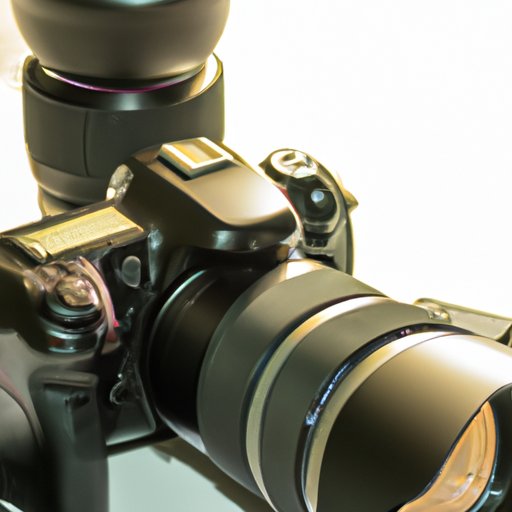Introduction
Photography is the art of capturing a moment in time with a camera. Photographers use light and composition to capture images that tell stories or evoke emotions. With so many different camera models and features available, it can be difficult to know which camera is best for your specific needs.

Compare Different Camera Models and Their Features for Photography
When choosing a camera for photography, it’s important to consider the type of camera as well as the features. There are three main types of cameras: DSLR (Digital Single Lens Reflex), mirrorless, and point-and-shoot. DSLRs are preferred by professional photographers because they offer the most control over settings and the highest image quality. Mirrorless cameras are smaller, lighter, and more affordable than DSLRs but still offer great image quality. Point-and-shoots are compact and easy to use, making them perfect for beginner photographers.
In addition to considering the type of camera, there are several features to keep in mind when shopping for a camera for photography. These include megapixels, sensor size, autofocus system, ISO range, shutter speed, and video capabilities.
Review the Best Cameras for Specific Types of Photography
The best camera for photography depends on the type of photography you plan to do. For portrait photography, look for a camera with a high megapixel count, good low-light performance, and fast autofocus. The Canon EOS 5D Mark IV is a great choice for portrait photography. For landscape photography, look for a camera with a large sensor, good dynamic range, and good low-light performance. The Nikon D850 is an excellent choice for landscape photography. For action shots, look for a camera with a fast burst mode and good autofocus tracking. The Sony A7 III is a great option for action shots.
Discuss the Quality of Image Produced by Different Cameras
The quality of the image produced by a camera depends on several factors, including resolution, color accuracy, and dynamic range. Resolution refers to the number of pixels in an image. Higher resolutions mean sharper, more detailed images. Color accuracy refers to how accurately the colors in an image are reproduced. Dynamic range refers to the range of tones between the darkest and lightest parts of an image. Cameras with higher dynamic range produce better images with more depth and detail.

Explain the Importance of Lenses when Choosing a Camera for Photography
The lenses used with a camera have a major impact on the quality of the images produced. When choosing a camera for photography, it’s important to consider the lenses available. Zoom lenses allow you to get close to your subject without having to physically move closer. Aperture refers to how much light is let into the lens. Larger apertures let in more light, allowing for better low-light performance. Focal length is the distance between the lens and the sensor. Longer focal lengths allow for greater magnification of distant subjects.

Examine the Pros and Cons of Digital versus Film Cameras for Photography
Digital cameras offer several advantages over film cameras. Digital cameras are faster, more versatile, and easier to use than film cameras. They also allow you to instantly view and edit photos. However, digital cameras can be expensive and require batteries and memory cards. Film cameras are slower and require more manual work, but they produce high-quality images and don’t require batteries or memory cards.
Analyze the Cost-Effectiveness of Different Camera Models for Photography
When choosing a camera for photography, it’s important to consider the cost. Price is an important factor, but it’s not the only one. Look for cameras that offer good value for money by providing features and performance that exceed their price tag. Compare different camera models to find the one that offers the best features at the lowest price.
Conclusion
When choosing a camera for photography, it’s important to consider the type of camera, features, quality of image produced, lenses, digital versus film cameras, and cost-effectiveness. Different cameras are better suited for different types of photography, so be sure to do your research before making a purchase. With the right camera, you can take stunning photographs that will last a lifetime.
(Note: Is this article not meeting your expectations? Do you have knowledge or insights to share? Unlock new opportunities and expand your reach by joining our authors team. Click Registration to join us and share your expertise with our readers.)
